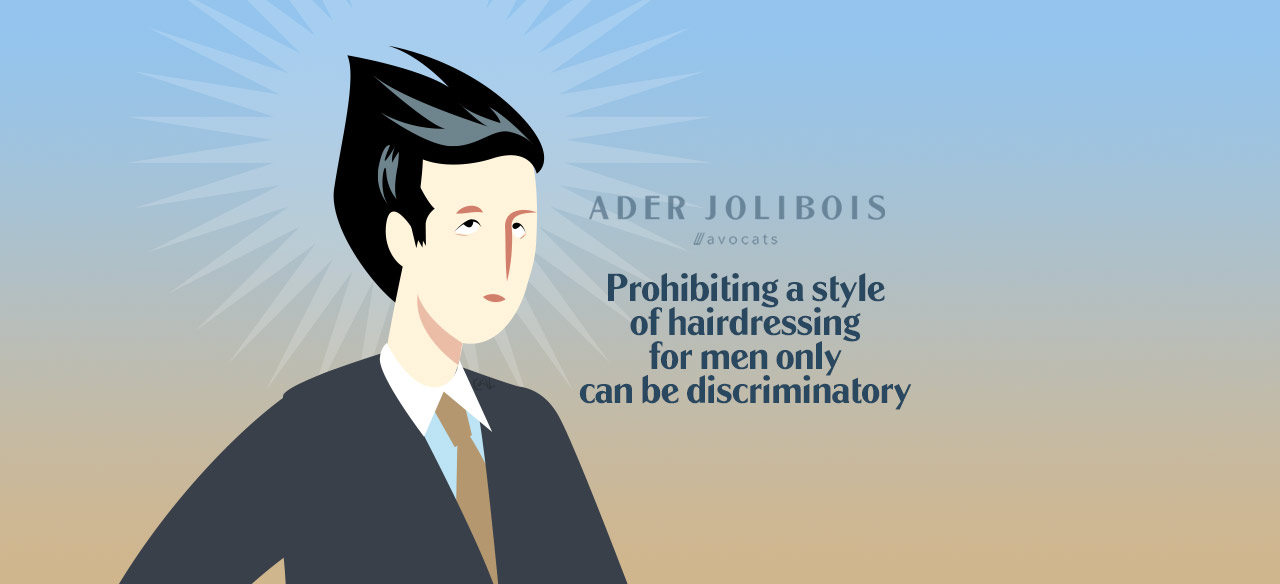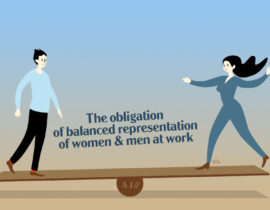- Home
- >
- Social Law
- >
- Prohibiting a style of hairdressing for men only can be discriminatory

Prohibiting a style of hairdressing for men only can be discriminatory
A new example of gender equality in the workplace
Focus on the judgment handed down on November 23, 2022 by the social chamber of the Court of Cassation: Prohibiting a way of styling hair for men only can be discriminatory
The social chamber of the Court of Cassation has issued a judgment on the notion of direct discrimination based on the physical appearance in relation to the sex of the employee and considers that the social perception of the physical appearance of the male and female genders cannot constitute a requirement genuine and determining professional qualification justifying a difference in treatment relating to hairdressing between women and men.
The facts and the procedure
This case concerns a steward hired in 1998 by an airline company, Air France. From 2005, the employee presented himself wearing African braids tied in a bun when boarding, which was refused to him by the employer on the grounds that such a hairstyle was not authorized by the rules manual. wearing a uniform for male cabin crew. Subsequently and until 2007, the employee wore a wig to perform his duties.
Claiming to be a victim of discrimination, he seized, on January 20, 2012, the labor court. On April 13, 2012, the employer notified the employee of a five-day layoff without pay for failing to comply with the rules for wearing a uniform. On February 17, 2016, the employee was declared permanently unfit to perform the function of cabin crew, due to a depressive syndrome recognized as an occupational disease by the primary health insurance fund. After having benefited from professional retraining leave and confirmed that he did not wish to be reclassified on the ground, he was dismissed on February 5, 2018 for permanent incapacity and impossibility of reclassification.
On appeal, the employee requested that the employer be ordered to pay a sum as damages for discrimination, moral harassment and disloyalty, a back pay for the period from January 1, 2012 to February 28, 2014 and the related paid holidays, the nullity of his dismissal and consequently the condemnation of the employer to the payment of damages in this respect, a balance of notice with the related paid holidays and compensation for dismissal.
The Court of Appeal dismissed all of the employee’s claims and therefore ruled out any discrimination.
The Court of Appeal held that:
- Aircrew presentation was part of the airline’s brand image;
- This brand image required the wearing of a uniform;
- The difference in hairstyle between men and women was based on codes in use.
The question put to the Court of Cassation
Does the fact for an employer to restrict the freedom of its male employees in the way they style their hair constitute discrimination based on sex?
Landmarks :
The labor code
The labor code prohibits dismissing or sanctioning an employee for discriminatory reasons such as gender. However, it allows for differences in treatment when they meet genuine and determining occupational requirements. The objective sought by the employer must then be legitimate and the requirements imposed on employees proportionate.
Jurisprudence
Case law specifies that the demands on the employee must be dictated by the nature or the objective conditions of exercise of the job. These requirements cannot respond to subjective considerations such as the willingness of the employer to take into account the particular wishes of customers.
The response of the Court of Cassation: The requirements linked to the exercise of the profession of steward do not justify prohibiting men from wearing a hairstyle authorized for women.
The Court of Cassation considers that the prohibition for a man to wear a hairstyle, authorized by the same reference system for female staff, characterizes discrimination directly based on physical appearance in connection with gender.
The Court of Cassation considers that the Court of Appeal could not invoke arguments relating to:
- the wearing of uniform, ineffective to justify that the restrictions imposed on male staff relating to hairdressing were necessary to allow the identification of Air France staff and to preserve its image. The Court of Cassation thus considers that the way of doing one’s hair is neither part of the uniform nor its extension.
- to the social perception of the physical appearance of the male and female genders, which cannot constitute a genuine and determining occupational requirement justifying a difference in treatment relating to hairdressing between women and men. The Court of Cassation therefore considers that social codes are not objective criteria which justify a difference in treatment between men and women. In the context of this profession, it is therefore not possible to prohibit men from having a hairstyle authorized for women.
Jocelyne CLERC / Catherine HARNAY
Related Posts
Recent Articles
- Faced with crises and challenges, let’s dare to transform the social business model
- Prohibiting a style of hairdressing for men only can be discriminatory
- The obligation of balanced representation of women and men at work
- Sexist joke: a limit to freedom of speech?
- Disagreement with your Boss: Free Speech or Not?




